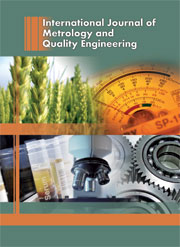No CrossRef data available.
Article contents
Correction of machining operations with the Total InertialSteering
Published online by Cambridge University Press: 22 September 2014
Abstract
The Total Inertial Steering approach proposed in this paper can perform an optimumcorrection of the geometric deviations of the manufactured part with respect to itsdigital model, from the measured points on its surfaces. In the case of production bymachine tool numerical control, there exist a link between the tool offsets and deviationsof measured points. An incidence matrix which represents this link is obtained. In mostcases, this matrix is not square and therefore not invertible, because there are moremeasured points as correctors to adjust. The Gauss pseudo-inverse is used to calculate thevalues of corrections to be made to compensate for measured deviations. Tolerancesassociated with the surfaces must also be taken into account in the incidence matrix.However, when the same cutting tool machine two surfaces with different point values, theresulting solution favors the one with the highest number of points, at the expense of theother surface which can remain not conform towards its tolerance. This paper proposes astrategy to rebalance the correction surfaces, and this regardless of the number of pointsand tolerance of each surfaces. A relatively simple tutorial example is given in the paperto enable tracking calculations.
Information
- Type
- Research Article
- Information
- Copyright
- © EDP Sciences 2014

